Navigating Success:Building an Effective Data Governance Roadmap
Welcome to the realm where information transforms into insight, and decisions are powered by the intelligence embedded within your organization's data. In today's dynamic business landscape, effective data governance stands as the cornerstone of success, ensuring the integrity, security, and strategic utilization of your valuable information assets.
In this exploration, we delve into the crucial components of a robust data governance strategy and roadmap, uncovering the means by which organizations can fortify their data management practices. Join us on this journey to understand the essence of data governance and discover actionable steps to empower your organization through informed decision-making and optimized data utilization.
II. Fundamentals of Data Governance
Data governance is the foundation of effective data management. It entails establishing policies, procedures, and guidelines to ensure data is consistent, accurate, secure, and accessible. The fundamental principles of data governance include data quality, data stewardship, and data ownership.
- Data Quality: Data governance emphasizes maintaining high data quality standards. This involves regular data validation, cleansing, and transformation to ensure data accuracy. Poor data quality can lead to erroneous decision-making, operational inefficiencies, and a loss of trust in data-driven insights.
- Data Stewardship: Data stewardship assigns responsibility for data assets to individuals or teams within an organization. These stewards oversee data quality, security, and compliance with established policies. Clear data stewardship roles ensure accountability and facilitate effective data management.
- Data Ownership: Defining data ownership is essential. It designates who is responsible for specific data sets and their integrity. Data owners are accountable for data governance practices, and they work closely with data stewards to ensure data quality and compliance with regulations.
Understanding these three fundamental aspects of data governance is crucial to building a solid foundation for effective data management. By focusing on data quality, assigning data stewardship responsibilities, and clarifying data ownership, organizations can create a robust framework for managing their data assets.
III. The Role of Data Governance Strategy
Data governance is not merely a set of rules and policies; it requires a well-defined strategy to succeed. A data governance strategy outlines the goals, objectives, and approach for managing data within an organization. It plays a crucial role in aligning data management with the broader organizational strategy.
A strong data governance strategy provides clarity on responsibilities, processes, and the technology needed to support data management initiatives. It ensures that data is treated as a valuable asset, not just a byproduct of business operations. By establishing a clear strategy, organizations can avoid ad-hoc data management practices and reduce data-related risks.
Furthermore, a well-crafted data governance strategy helps organizations adapt to evolving data challenges and regulatory requirements. It sets the foundation for building a data governance roadmap, which is essential for successful implementation. In the following section, we will delve into the specifics of developing a data governance roadmap to turn your strategy into actionable steps.
IV. Developing a Data Governance Roadmap
Creating a data governance roadmap is a crucial step in ensuring the successful implementation of data governance within your organization. It serves as a guide to help you navigate the complex landscape of data management and governance. Here's how you can go about developing an effective data governance roadmap:
- Assessment and Analysis:
- Start by conducting a thorough assessment of your current data landscape. Understand your existing data assets, their quality, and how they're used.
- Identify data-related challenges and pain points, such as data silos, quality issues, or compliance concerns.
- Define Goals and Objectives:
- Clearly define the goals and objectives you want to achieve with data governance. These could include improving data quality, enhancing data security, or ensuring compliance with regulations.
- Stakeholder Engagement:
- Identify key stakeholders within your organization who will play a role in data governance. Engage with them to gather their input and support for the roadmap.
- Strategic Prioritization:
- Prioritize data governance initiatives based on their impact on the organization's goals. Determine which areas require immediate attention and allocate resources accordingly.
- Create a Roadmap Timeline:
- Develop a timeline that outlines the milestones and phases of your data governance journey. This helps set realistic expectations for implementation.
- Resource Allocation:
- Determine the necessary resources, including personnel, technology, and budget, required for successful implementation.
- Governance Framework:
- Establish a governance framework that defines roles, responsibilities, and decision-making processes within the data governance structure.
- Communication Plan:
- Develop a communication plan to ensure that all stakeholders are informed and engaged throughout the implementation process.
- Data Quality and Compliance Measures:
- Define specific data quality standards and compliance measures that need to be implemented and monitored.
- Monitoring and Feedback:
- Implement mechanisms to continuously monitor progress and gather feedback from stakeholders. This allows for course corrections as needed.
- Training and Education:
- Provide training and education programs to build data governance awareness and competencies among your team members.
By following these steps and creating a well-structured data governance roadmap, your organization will be better prepared to address data-related challenges, improve data quality, and achieve your data governance objectives. This roadmap will serve as a dynamic document that evolves as your organization's data needs change over time.
V. Monitoring and Maintenance
Once you've established your data governance roadmap and initiated the implementation process, it's crucial to continuously monitor and maintain your data governance framework. Monitoring ensures that your strategy stays on track and adapts to evolving data needs.
Key steps in this phase include:
- Regular Assessments: Conduct periodic assessments to evaluate the effectiveness of your data governance efforts. This helps in identifying any deviations from the roadmap and ensures alignment with your organization's goals.
- Feedback Loops: Establish feedback mechanisms to capture insights and input from various stakeholders. This feedback can lead to improvements and adjustments in your data governance strategy.
- Compliance and Auditing: Ensure that your data governance practices remain compliant with relevant regulations and industry standards. Conduct regular audits to identify any non-compliance issues.
- Communication: Maintain open communication channels within your organization. Keep all relevant parties informed about the progress and any changes to the data governance strategy.
- Training and Education: Continuously educate your team about data governance best practices. This empowers them to adhere to the established framework.
- Adaptability: Be ready to adapt your roadmap based on the changing data landscape and business requirements. Flexibility is essential to staying relevant and effective.
By actively monitoring and maintaining your data governance strategy, you ensure that it remains a dynamic and evolving framework that continues to meet the needs of your organization. This ongoing commitment to data governance is essential for long-term success in managing and leveraging your data effectively.
Conclusion
In conclusion, a well-structured data governance strategy and roadmap are fundamental for organizations looking to harness the power of their data while ensuring its quality, security, and compliance. It's a journey that requires ongoing commitment and adaptability to meet the evolving data landscape.
If you're ready to take the next step towards effective data governance, we invite you to explore Arkon Data, a comprehensive data management platform designed to help you establish and maintain a robust data governance framework. With Arkon Data, you can streamline data management, enforce data policies, and ensure data quality with ease. To learn more about how Arkon Data can transform your data governance efforts, schedule a demo today and embark on a path to data-driven success. Your data's potential awaits—take control with Arkon Data.


